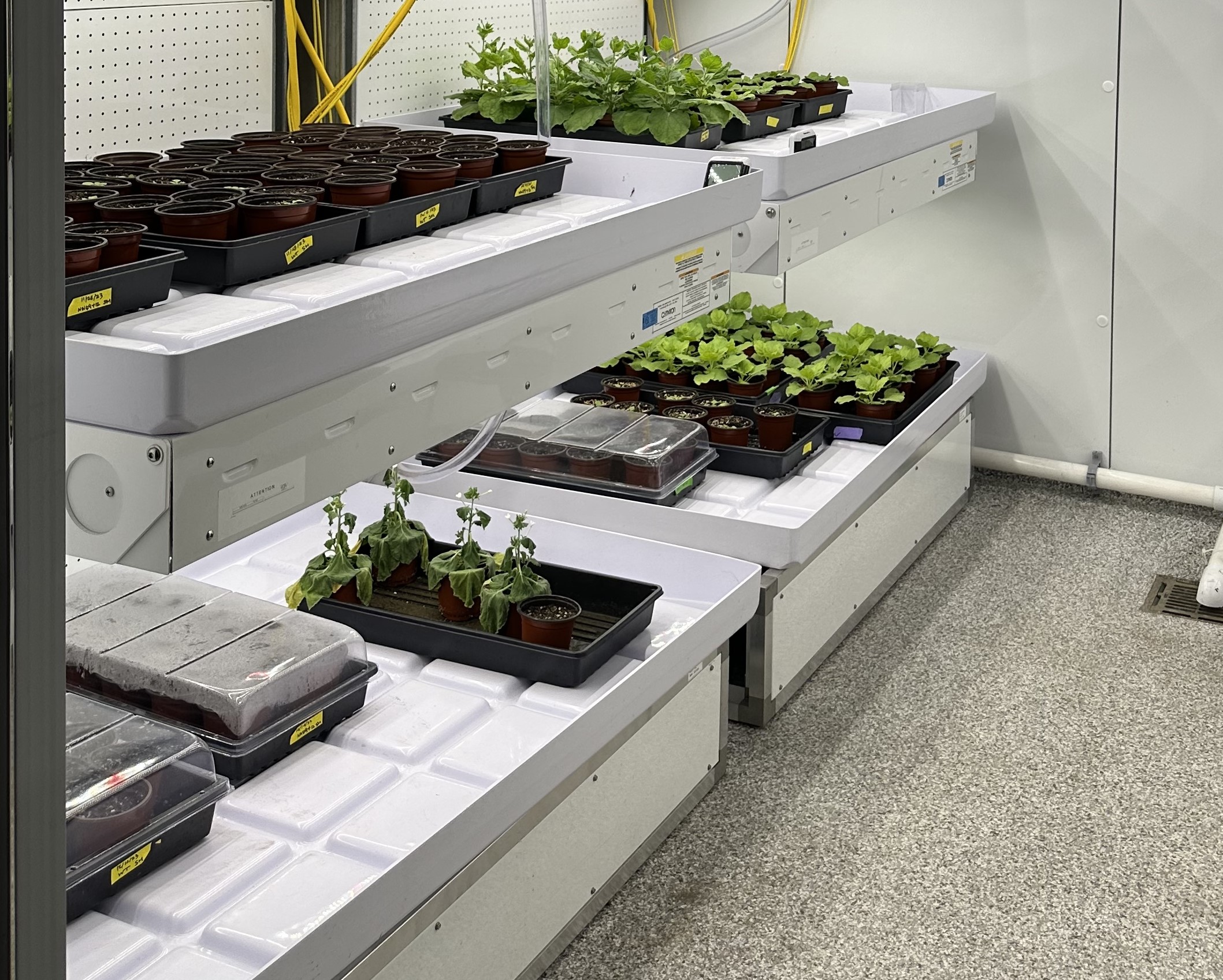Research at the PGPF
The Park lab (Molecular Biology) is currently using the facility to grow Nicotiana benthamiana, Nicotiana tabacum, Arabidopsis thaliana, and Colobanthus quitensis in different settings to study molecular and cellular mechanisms in plant-fungal interactions. This Research is funded by NSF-PBI #2126256

The Wang lab (Civil and Architectural Engineering) is evaluating the impacts in Integrating Evapotranspiration, Crop Growth, and Energy Models For Predicting Vertical Indoor Farming Performance using one of ours walk-in chambers. The research is supported by an excellence seed grant in CEA from UW.

The Weinig lab (Botany and Molecular Biology) is using is using our Facility to explore plant-microbial interactions in hydroponic system - Nutrient Film Technique (NFT). This work is supported by an Excellence Seed grant in CEA at UW.

Fraidoon Karimi (Plant Sciences), visiting scholar at UW, is characterizing the response of strawberry plants to different incoming light (use of far red). His research is supported by the Presidential Fellowship.

The Laughlin lab (Botany) is developing and testing root boxes (rhizotrons) to measure rates of apical root growth in native trees, shrubs, grasses, and wildflowers. This research is important to understand drought tolerance strategies of Wyoming plants and how they will respond to changing temperature and precipitation regimes. The research is funded by NSF.

Dr. Guadagno (Science Institute) and her team are using greenhouse space to grow a panel of different genotypes of cotton to dissect the mechanistic underpinnings of water dynamics under drought to inform productivity models. This research is funded by NSF-PGR#2102120.

The Ewers lab (Botany) is using a large greenhouse bay to bulk seeds from recombinant inbred lines for Brassica rapa. This work has been supported by the NSF-IOS1547796

The Shoemaker lab (Botany) is studying the response of annual plants from serpentine communities in Northern California exposed to increased variation in precipitation frequency and intensity. This work is supported by NSF PRFB # 2410511 and by the Wyoming Research Scholars Program.

